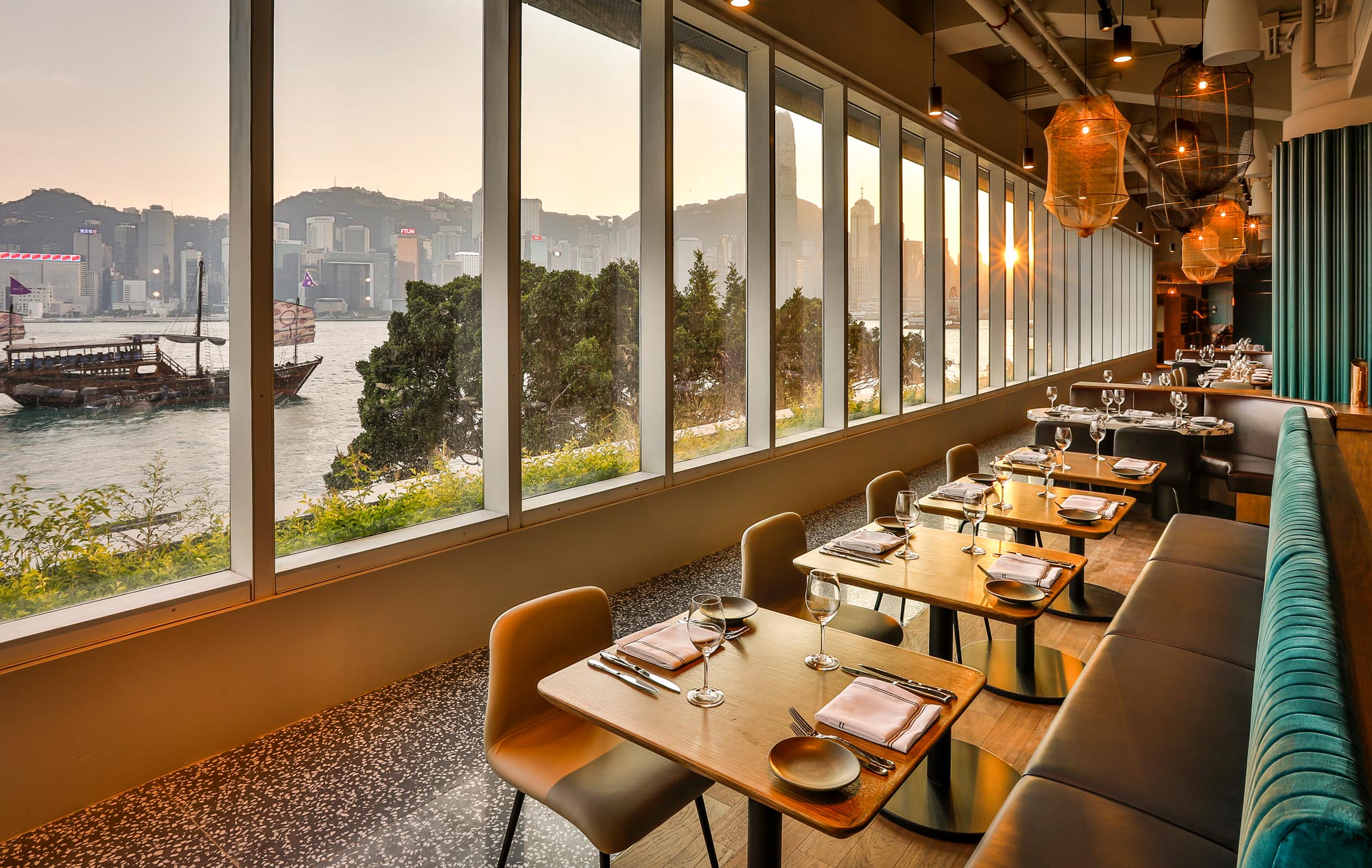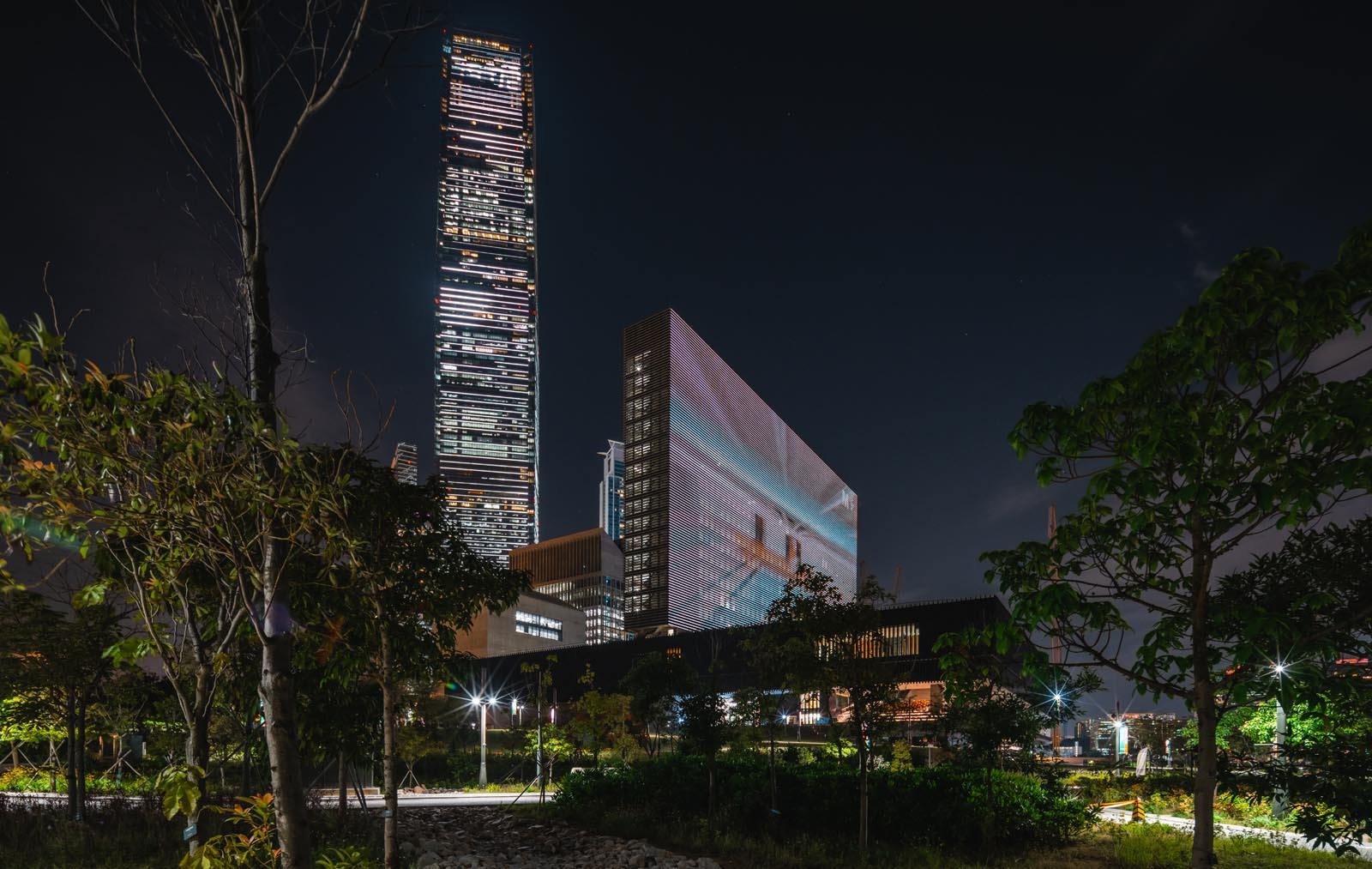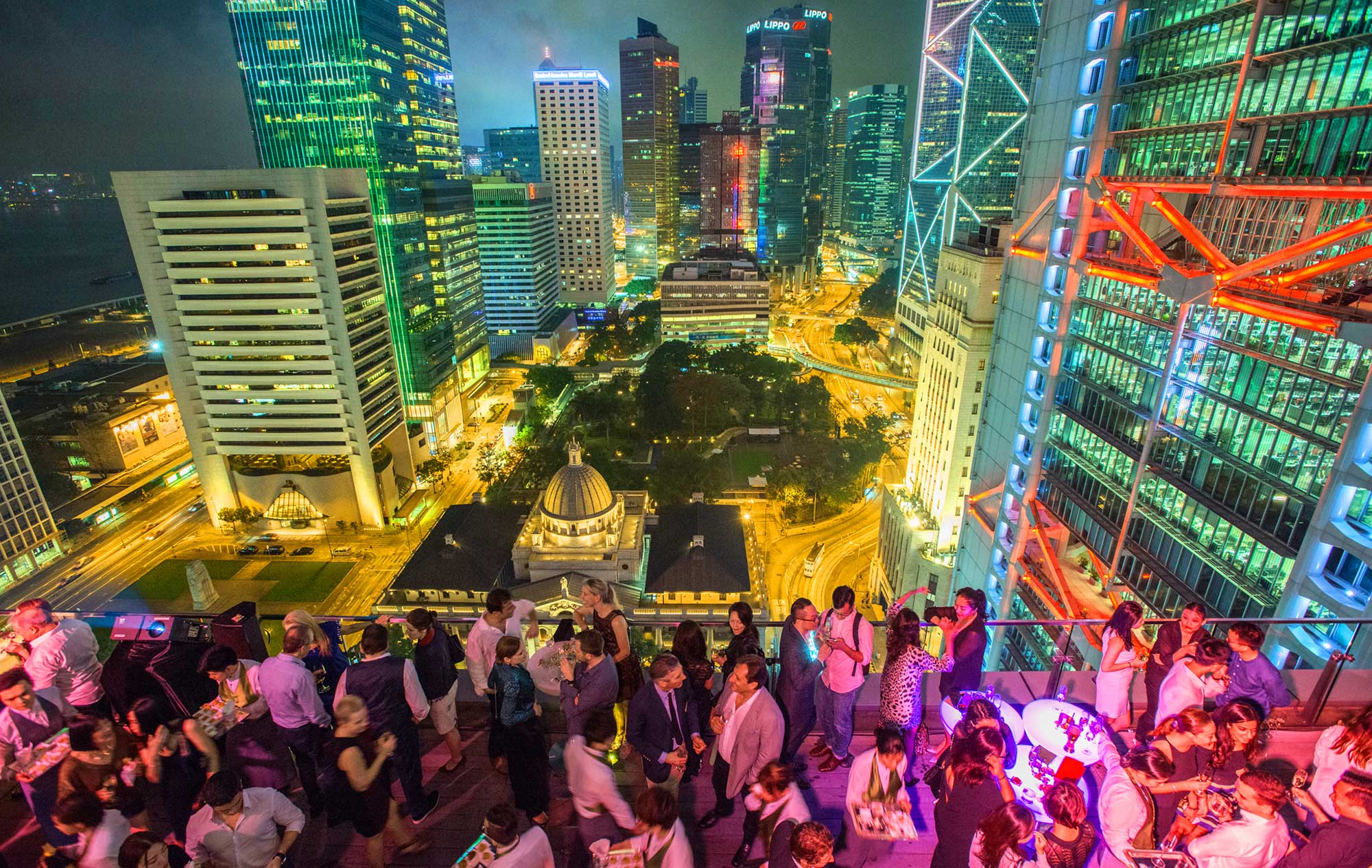Hood draped over his head, backpack bulging with paint cans, 4Get hops over a fence and makes his way up a pitch-black flight of stairs with the aid of his smartphone torch. ‘We found this place two years ago and started painting,’ he says, emerging onto a second floor landing.
He gazes out at the cavernous tin-roofed atrium. ‘This is an old shipping yard,’ he explains. Part of it is now used as a luxury car workshop, and part of it for the weekly Siu Lam Flea Market, but this place in Hong Kong’s Tuen Mun district is mostly abandoned, filled with rubble and strange detritus such as an old amusement park bumper car. The walls are covered in graffiti and murals. ‘I’ve done maybe 10 pieces here already,’ says 4Get. ‘The owner’s fine with it. Every time we come, we let him know.’
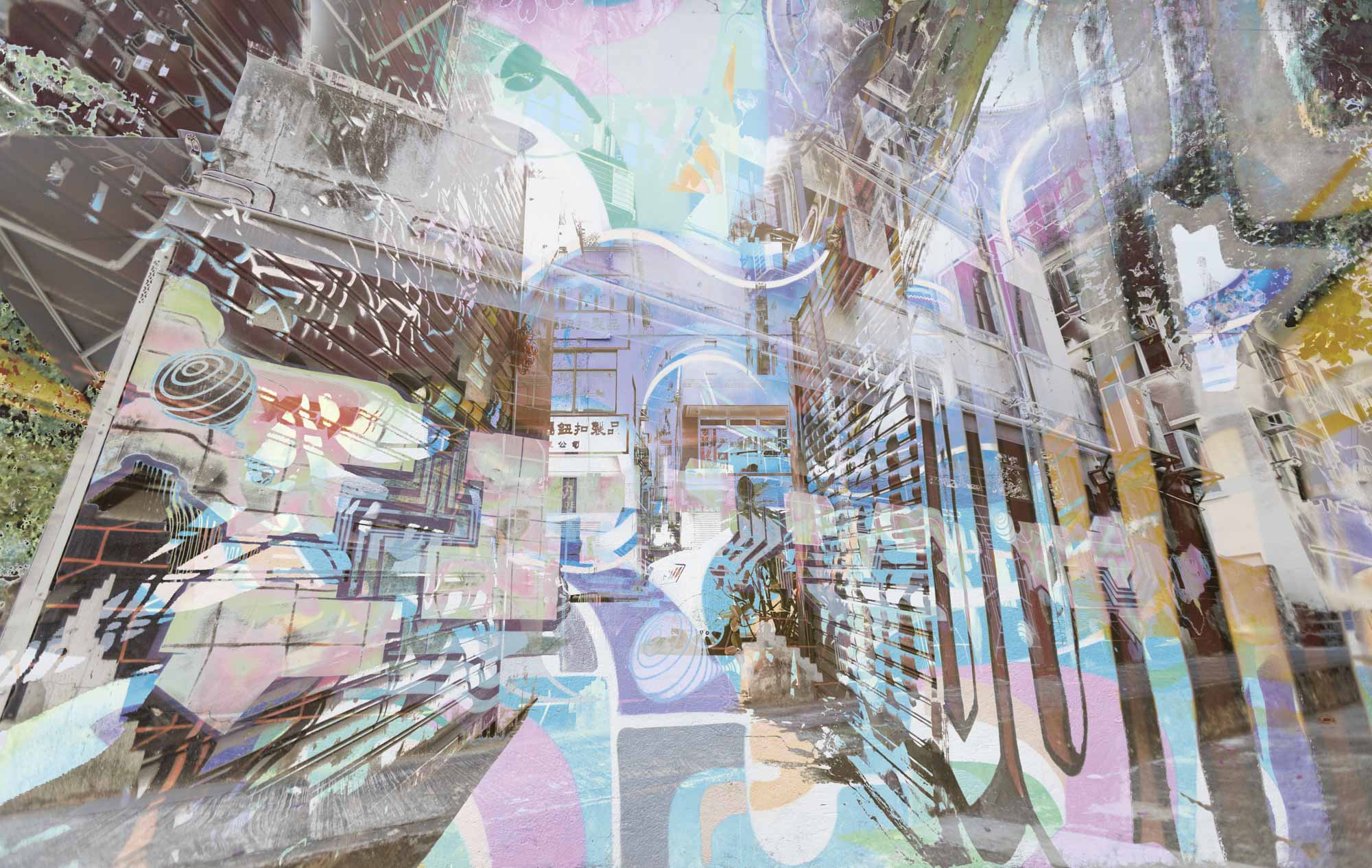
4Get was born and raised in Hong Kong, but he began painting murals about 12 years ago when he lived in the UK. ‘I saw a lot of street art, mostly the Banksy stuff, and it interested me – you can do stuff on the street and you can put some humour into it,’ he says. ‘That’s the thing that triggered me. First I started doing stencils. When I came back to Hong Kong, I started hanging out with graffiti writers who went out bombing (painting multiple walls at once) and tagging (writing your name), but I decided to do more free throw, a more organic style.’
You don’t need to venture out to a half-abandoned warehouse to find street art in Hong Kong. Over the past few years, the local scene has exploded, both with local talent and overseas artists who pass through, leaving their mark on the city’s walls. Since the arrival of Art Basel in 2011, Hong Kong has become a global hub for contemporary art, and this seems to have trickled down to the street art scene. Major exhibitions have been held for renowned French street artist Space Invader and Hong Kong-based Portuguese artist Vhils.
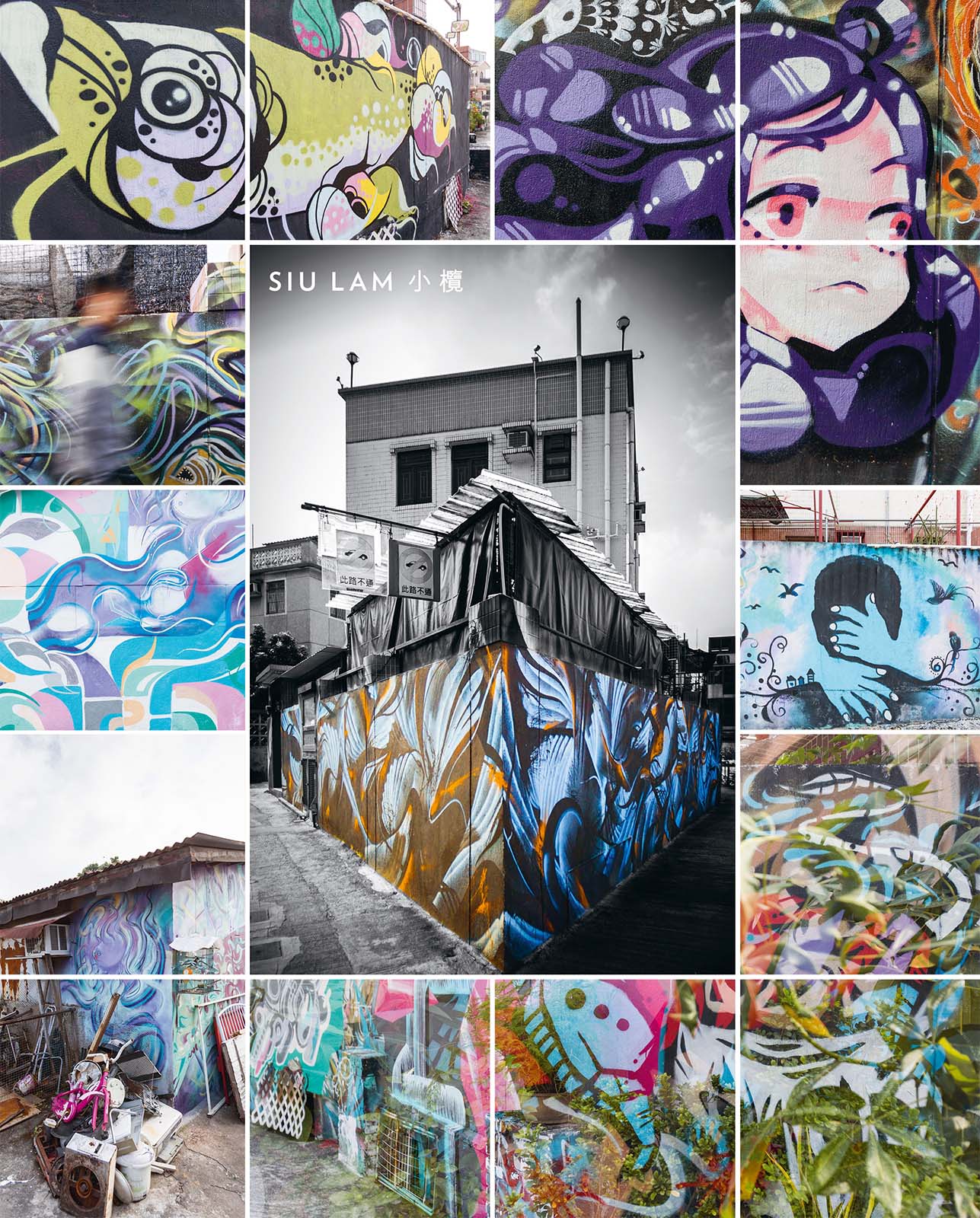
In a city with an art scene driven largely by the market – think auctions, galleries and fairs – street art is a more unvarnished antidote. It livens up grey neighbourhoods and brings art to a wide cross-section of people who might not otherwise see it.
‘Advertising and signage has become part of the iconic image of Hong Kong, but I doubt there are many people out there who feel like those advertisements are representative of the personality or views of the city,’ says Jason Dembski, founder of HKwalls, a group that connects street artists with business owners around town. ‘An artist creating work on the street, even if it is for self-promotion in some way, gives a voice to that person and, in some cases, a larger public.’
Dembski says Hong Kong has grown much more accepting of street art in recent years. ‘More and more you see bars, restaurants and even corporate offices hiring these artists to create work in their spaces,’ he says. A host of events and organisations are expanding the local street art scene, like Dirty Panda, which hosts graffiti battles, and Write the Future, which runs exhibitions and workshops. Every year, HKwalls mounts a large exhibition in a different part of Hong Kong, which draws thousands of people to watch artists paint murals in the street.
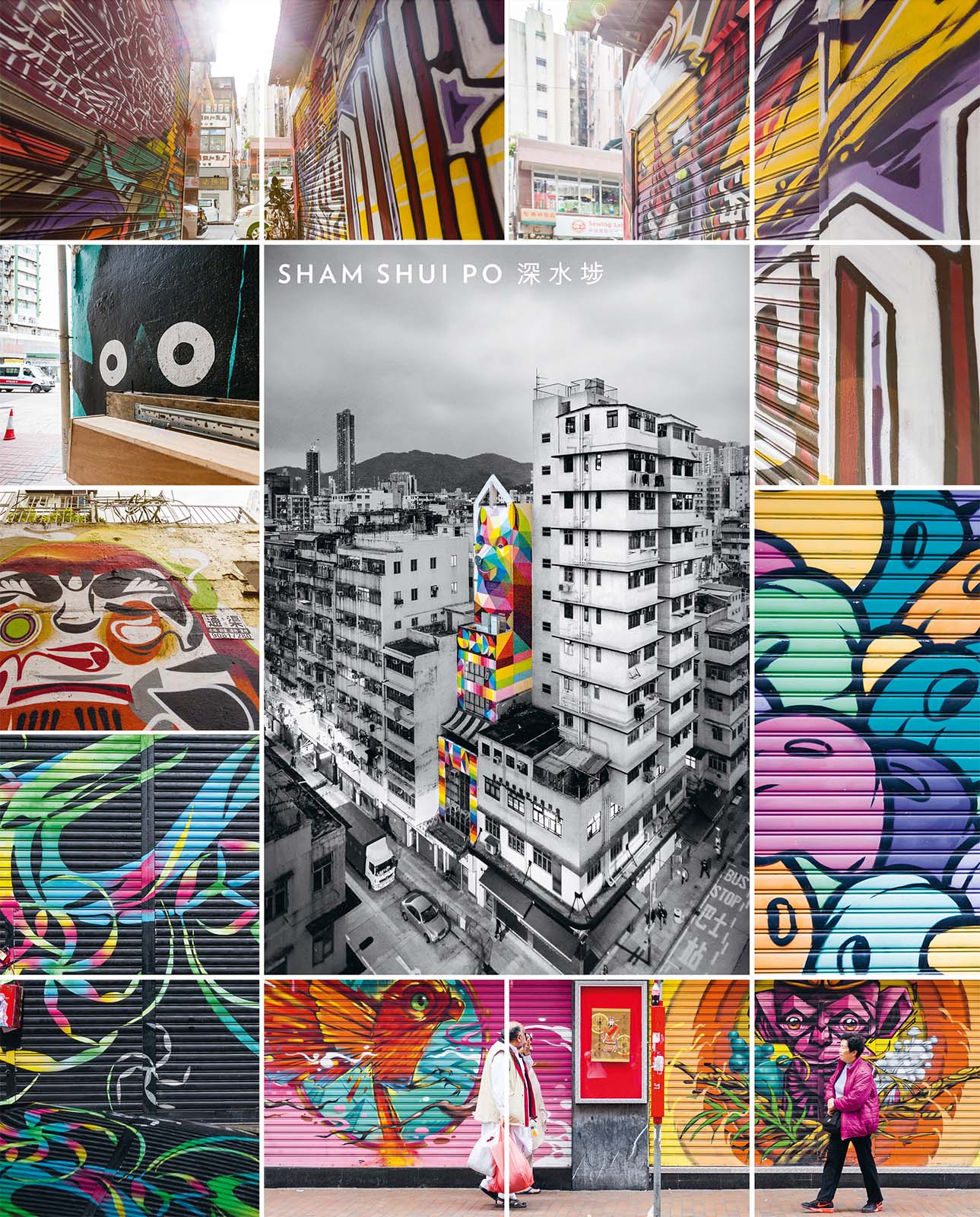
In fact, the scene has grown to the point where some are now questioning whether it has become too commercial. After last year’s HKwalls festival, which filled the working-class neighbourhood of Sham Shui Po with 30 attention-grabbing murals, local activists accused the event of promoting gentrification.
Dembski felt the criticism was unfair – ’To discuss gentrification or change of any neighbourhood in Hong Kong needs a much wider lens,’ he says – but it was hardly unprecedented. In cities around the world, street art has transformed from something transgressive to a kind of hip decoration for property developments and upscale businesses.
But street art in Hong Kong is still largely grass roots. It has even produced its own distinct style, pioneered by outsider artist King of Kowloon, real name Tsang Tsou-choi, who, before his death in 2007, spent years applying his unique calligraphy to walls and street furniture around the city. In the 1990s, local rapper MC Yan brought New York-style hip hop graffiti to Hong Kong. ‘He formed a crew, and I think this is how graffiti started in Hong Kong,’ says local artist KDG.
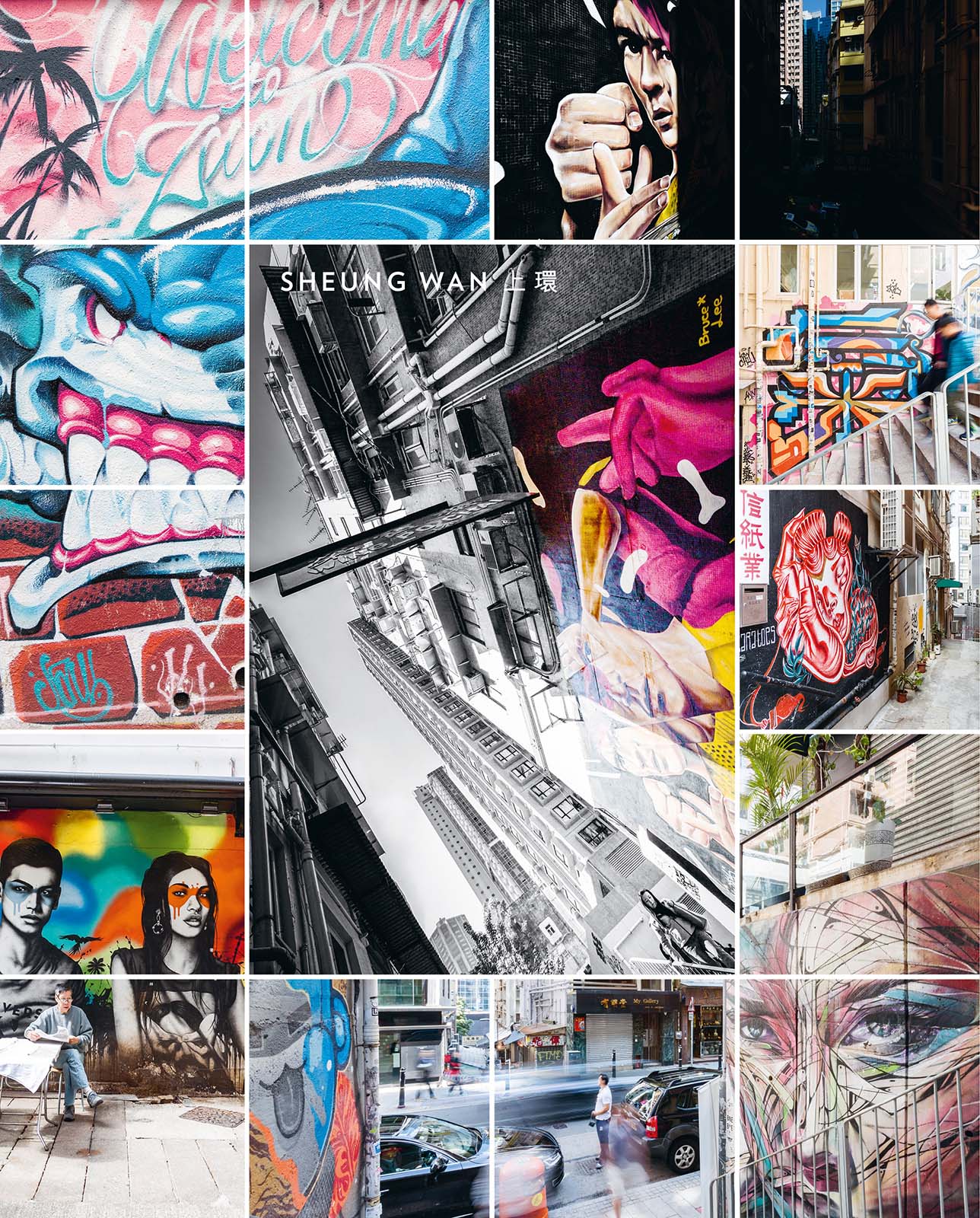
4Get says the number of active street artists and graffiti writers in Hong Kong remains small. ‘Definitely no more than 50 people,’ he says. But the city’s role as a global hub has drawn many artists from overseas, some of whom have decided to settle down here. One of them is Stern Rockwell, who grew up in New York in the 1970s, when modern graffiti was born. That led him into a career in design, which ultimately drew him to Hong Kong, where he now works on commissioned pieces like a three-storey mural he painted for a now-defunct cafe in Sai Ying Pun.
Rockwell says graffiti saved him from the crime and crack epidemic that ravaged New York in the ‘80s – so he isn’t willing to begrudge anyone who makes a living from the art form. ‘I don’t believe in selling out,’ he says. 4Get has a similar philosophy. ‘I try not to think about getting too much money involved, but I have to survive, I have to pay my rent and bills,’ he says.
Besides, for every trendy mural in a hip neighbourhood like Sheung Wan, there’s a place like Siu Lam, where artists work without any commercial considerations. Not only are the warehouse’s walls covered in paint, the graffiti even extends to abandoned cars parked across the street.
Standing in front of the warehouse, 4Get eyes a six-metre-tall mural he started two months earlier. ‘I want to finish it today,’ he says, taking the spray cans from his backpack and setting them on the ground. There’s no audience and no client. It’s just him and his paint.
Return of Hong Kong’s street art festival
HKwalls has already filled the streets of Sheung Wan, Sai Ying Pun, Stanley and Sham Shui Po with street art murals by local and international artists. Now the action will shift to Wong Chuk Hang, an old industrial area that is quickly becoming a creative hub. ‘After three years in various residential neighbourhoods, we thought giving industrial a shot would be an interesting change of scenery,’ says HKwalls founder Jason Dembski. ‘On top of the South Island Cultural District, which includes some of the most progressive galleries Hong Kong has to offer, there are loads of design, photography and art studios in the area.’
HKwalls 2017, Wong Chuk Hang, 18-26 March, hkwalls.org
Where to see street art in Hong Kong
Western District
The trendy neighbourhoods of Sheung Wan and Sai Ying Pun are hotbeds for street art. Check out commissioned murals on the area’s shop facades, but don’t forget to peek inside back alleys for unauthorised works.
Sham Shui Po
More than 30 murals can be found in this lively Kowloon neighbourhood, including enormous pieces like the geometric mosaic by Spanish artist Okuda, which covers the facade of an 11-storey building.
Lam Tei Village
A quiet neighbourhood on the outskirts of Hong Kong has become an unlikely street art hotspot thanks to 4Get and Lina Wong, who have invited local and international artists to transform the area’s walls.
Siu Lam Flea Market
This gritty industrial outpost is where street artists come to relax and experiment. On the weekends, it is also a treasure trove of hawker stalls selling second-hand items.






